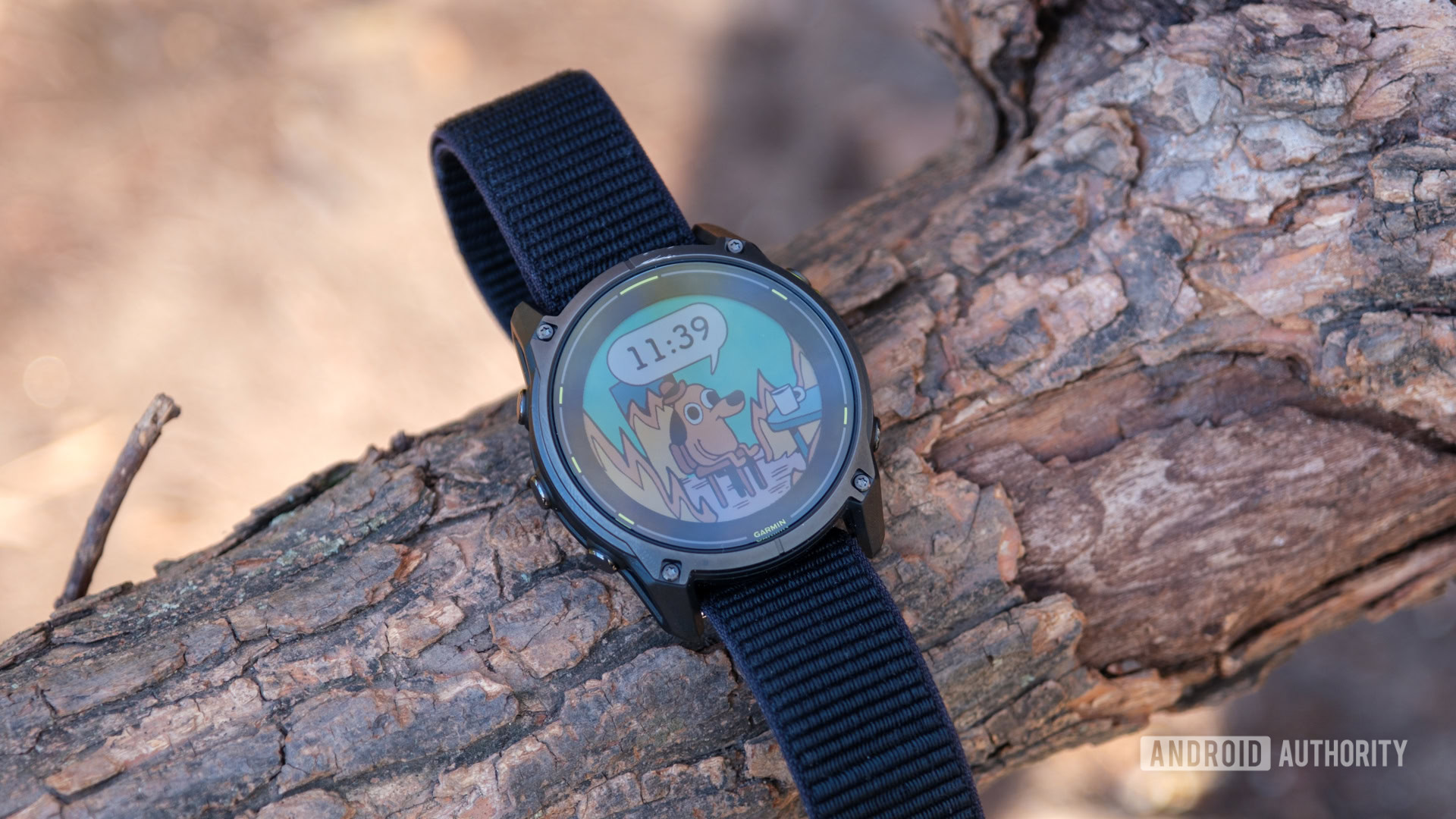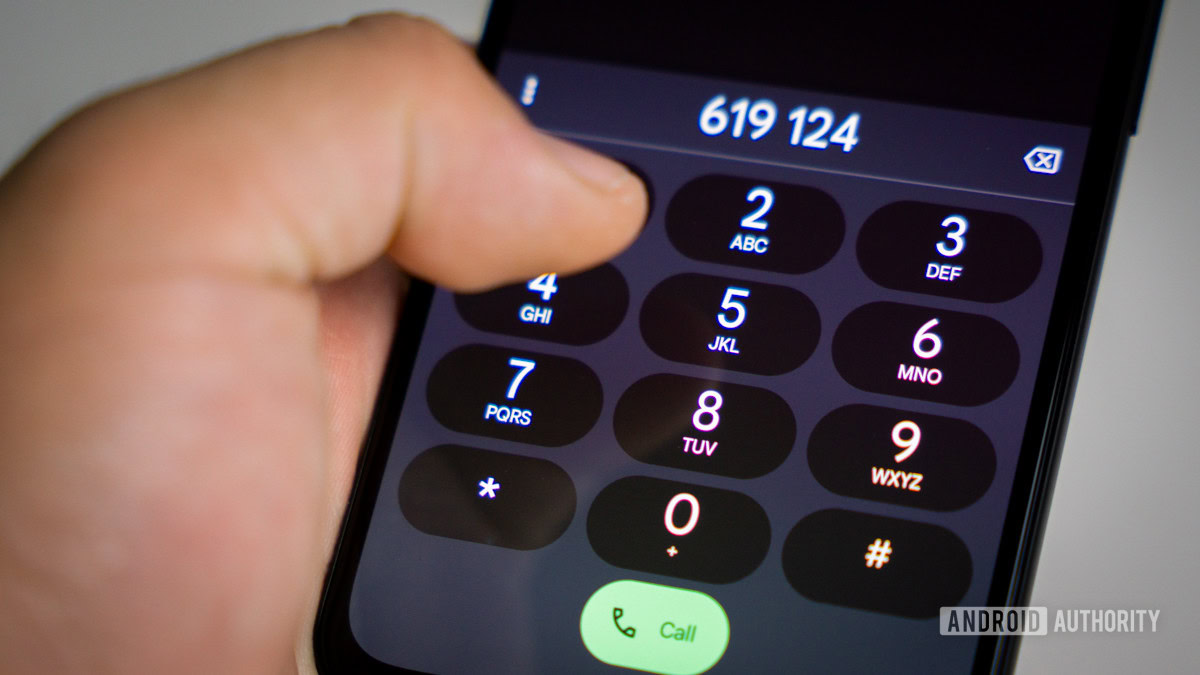When it debuted in 2021, the Pixel 6 represented a major shift for Google as it adopted a new design language and introduced its own in-house Tensor SoC. More than three years later, Google continues to embrace a similar philosophy. The Pixel 6 is now a few years old, so let’s take a closer look at how it compares to the Pixel 8 in this Pixel 6 vs Pixel 8 comparison.
Want to know more about the latest Google Pixel family? Check out our guide to the Pixel 9 series.

Google Pixel 8
Bright display • Upgraded face-unlock • Improved camera
A bright display from Google's 2023 flagship phone
The Google Pixel 8 introduces the new Actua display, a 6.2-inch panel that's 42% brighter than the Pixel 7. Backed by the fully updated Tensor G3 chipset, and a new 50MP camera, this promises to be one of the more exciting Pixel phones.
Google Pixel 6 vs Pixel 8: At a glance
- The Pixel 6 is a slightly larger phone than the Pixel 8.
- The Pixel 8 has a much faster and improved SoC.
- The Pixel 8 has a much better software update policy than older Pixels.
- The Pixel 8 has a higher refresh rate at 120Hz.
Google Pixel 6 vs Pixel 8: Specs
Display | Google Pixel 6 6.4-inch OLED Gorilla Glass Victus front | Google Pixel 8 6.2-inch OLED |
Processor | Google Pixel 6 Google Tensor | Google Pixel 8 Google Tensor G3 |
RAM | Google Pixel 6 8GB LPDDR5 | Google Pixel 8 8GB LPDDR5X |
Internal storage | Google Pixel 6 128GB or 256GB | Google Pixel 8 128 or 256GB |
Battery and power | Google Pixel 6 4,600mAh (typical) No charger in box | Google Pixel 8 4,575mAh (typical) |
Cameras | Google Pixel 6 Rear: Front: | Google Pixel 8 Rear: Front: Camera app does not have pro controls |
Video | Google Pixel 6 Rear: Front: | Google Pixel 8 Rear: Front: Supports: Macro Focus Video, 10-bit HDR, Cinematic Blur/Pan, Slo-Mo up to 240fps, 4K timelapse, Astrophotography timelapse, OIS, digital zoom up to 7x, HEVC (H.265), AVC (H.264) |
Audio | Google Pixel 6 Stereo speakers | Google Pixel 8 Stereo speakers |
Security | Google Pixel 6 In-display fingerprint | Google Pixel 8 Titan M2 security chip |
Buttons and ports | Google Pixel 6 USB-C 3.1 Gen 1 | Google Pixel 8 USB-C 3.2 |
Connectivity | Google Pixel 6 Wi-Fi 6E (802.11ax) | Google Pixel 8 Wi-Fi 7 (802.11be) |
Bands | Google Pixel 6 [5G Sub 6GHz] Model GB7N6 [5G mmWave + Sub 6GHz] Model G9S9B3 | Google Pixel 8 Model G9BQD (US and CA) Model GKWS622 (US and CA): Model GZPFO (JP): Model GPJ41 (All other countries): |
Software | Google Pixel 6 Android 12 | Google Pixel 8 Android 14 |
Dimensions and weight | Google Pixel 6 158.6 x 74.8 x 8.9mm | Google Pixel 8 150.5 x 70.8 x 8.9mm |
Durability | Google Pixel 6 IP68-rated | Google Pixel 8 IP68-rated |
Colors | Google Pixel 6 Stormy Black, Kinda Coral, Sorta Seafoam | Google Pixel 8 Obsidian (black), Hazel (blue-gray), Rose (pink) |
In-box contents | Google Pixel 6 1m USB-C to USB-C cable (USB 2.0) No charger in box (*France has charger and headphones included per local laws) | Google Pixel 8 Google Pixel 8 |
Two years is a long time when it comes to mobile hardware, though the Pixel 6 and Pixel 8 still share quite a bit of DNA. There’s the same storage configuration and RAM size, though the latter model upgrades to LPDDR5X memory. Even the battery and charging speeds aren’t all that different, though we’ll get into that a bit later. Of course one of the biggest differences is the processor powering them.
The Pixel 6 is powered by the very first Tensor SoC, which introduced a lot of great machine learning and AI features that were unrivaled at the time. While it was a solid processor, the latest Tensor G3 is a major step forward. It not only packs the latest generation of ARM CPUs and an upgraded GPU but there’s also a new ISP and imaging DSP. There’s even a next-gen TPU, which will take machine learning to the next level. It also isn’t prone to the same level of overheating issues as older Pixels with Tensor G1 and G2 chips, based on our experience reviewing the Pixel 8.
Rita El Khoury / Android Authority
The display has also shrunk a bit since the Pixel 6 was introduced. The Pixel 8 packs a 6.2-inch OLED, which is .2 inches smaller than the two-year-old Pixel. The newer display also has improved peak brightness and a higher refresh rate.
Software support is another key difference between the two. The Pixel 8 comes with Android 14 out of the box, whereas the Pixel 6 launched with Android 12 but is currently upgradeable all the way to Android 14. They might run the same software but the Pixel 8 has the advantage of much longer support.
The Pixel 6 will likely receive its last Android update in 2024, with security patches lasting until mid-2027. Meanwhile, the Pixel 8 is just starting out and will see support for OS updates, security patches, and feature drops for a total of seven years. This new update commitment is a much stronger policy than the 3 years of OS updates and five years of security patches the Pixel 6 promised.
Google Pixel 6 vs Pixel 8: Size comparison
The Pixel 6 is larger than the latest Pixel, measuring 158.6 x 74.8 with a thickness of 8.9mm. In contrast, the Pixel 8 shrinks down to 150.5 x 70.8 while retaining the same thickness. The smaller design also shaves off 20g from the Pixel 6, coming in at 187g total. In our Pixel 8 hands-on coverage, we immediately noticed the phone feels great. It’s not too big or too small.
Moving past the size, the design language differs as well. While both phones have a glass rear with a camera bar at the top, the Pixel 6 had a two-tone paint job that divided opinions but certainly made it stand out. The Pixel 8 replaces the glass bar with metal and positions the camera in a pill-shaped window.
Google Pixel 6 vs Pixel 8: Camera
Rita El Khoury / Android Authority
While the Pixel 7 didn’t introduce significant changes to the camera experience compared to the Pixel 6, the Pixel 8 features a new main sensor. It retains the 50MP resolution but now boasts an improved aperture of ƒ/1.68, a notable upgrade from the ƒ/1.85 aperture on the Pixel 6. This enhancement delivers sharper details in well-lit conditions and improved image quality, even in low-light situations. Additionally, the 12MP ultrawide lens offers a broader field of view, now at 125.8 degrees.
In our experience this is a great camera with robust HDR, great low light snaps, and a refined color palette that makes for one of the most consistent camera packages on the market. The Pixel 8 is a major improvement over its predecessor but that is actually a compliment not an insult, considering the Pixel 6 is still a great camera phone even today.
Google Pixel 6 vs Pixel 8: Battery life and charging
The Pixel 6 had a 4,575mAh battery with 21W wired charging and up to 21W wireless charging with the Pixel Stand. This hasn’t changed too much for the Pixel 8. It now has a slightly larger 4,600mAh battery and faster 27W wired charging, at least. The phone takes about 77 minutes to fill up, which is faster than the Pixel 6 but still relatively sluggish compared to some of the Android phones with the best battery life. On the bright side, there’s also Adaptive Charging here which prolongs battery health during overnight power-ups.
Interestingly, it’s actually a bit slower than the Pixel 6 on the wireless front. The Pixel 8 supports up to 18W charging with the 2nd-gen Pixel Stand ($79 at Best Buy), while the Pixel 6 can wirelessly charge up to 21W with the Pixel Stand.
Google Pixel 6 vs Pixel 8: Price and availability
- Pixel 8 (128GB): $699
- Pixel 8 (256GB): $759
- Google Pixel 6 (128GB): $599
- Google Pixel 6 (256GB): $699
The Pixel 8 sees the first major price increase for the Pixel series in years, moving up $100. Of course, you also get an improved camera, a better processor, an impressive update policy, and many other upgrades.
The Pixel 6 ($399.99 at Amazon) can still be purchased through retailers like Amazon for as little as $350.
Google Pixel 6 vs Pixel 8: Should you upgrade?
Rita El Khoury / Android Authority
We wouldn’t imagine recommending buying a Pixel 6 in 2024 even if you can get it for cheap, as the Pixel 7a ($477 at Amazon) would be a better budget pick due to longer software support. For existing Pixel 6 owners, the Pixel 8 is a decent upgrade if you can find it for cheap, otherwise, you might just want to pay a bit more and get a Pixel 9.
Do you actually need to upgrade so soon? Honestly, no. The Pixel 6 is still an excellent phone and should at least see Android 15 before it stops receiving new OS updates, with security patches to follow until late 2026. If you really want a phone now and aren’t impressed by the Pixel 8 or Pixel 9, you could always pick up the Galaxy S24 ($859.99 at Amazon) instead.

Google Pixel 8
Bright display • Upgraded face-unlock • Improved camera
A bright display from Google's 2023 flagship phone
The Google Pixel 8 introduces the new Actua display, a 6.2-inch panel that's 42% brighter than the Pixel 7. Backed by the fully updated Tensor G3 chipset, and a new 50MP camera, this promises to be one of the more exciting Pixel phones.
Google Pixel 6 vs Pixel 8: FAQ
Yes, both phones have an IP68 rating. You can learn more about IP ratings in our guide.
No, the Pixel series has never had SD expandable storage.
Yes, the Pixel 6 and Pixel 8 both have a physical nanoSIM slot and an eSIM slot.
Yes, though only select models have Ultrawideband support for networks like Verizon.







 English (US) ·
English (US) ·